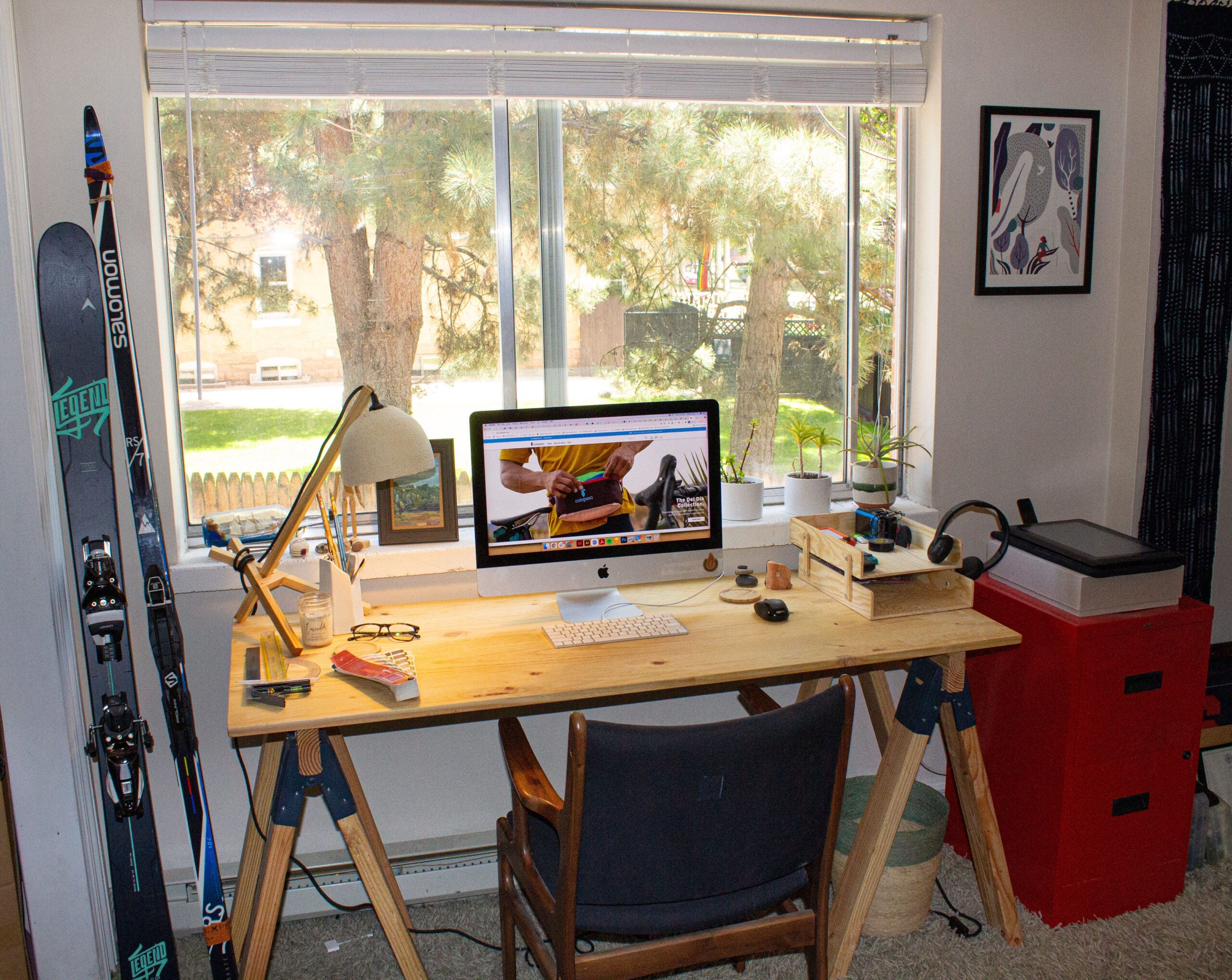Before the COVID-19 pandemic, Cotopaxi CEO Davis Smith was skeptical about remote work. But after a year of huge growth despite lockdowns and shipping challenges, he began to change his tune.
“We are a very flat company structurally, so it was not at all uncommon for an entry-level employee and a member of our C-suite team to sit down informally and have lunch together,” he explained. Before the pandemic, Smith thought that organic mingling of employees was too important to lose. “But we learned that working from home really fits us well,” he said.
In March of 2021, Cotopaxi put out an all-hands survey. A whopping 88 percent said both their productivity and work satisfaction were as good, if not better, than pre-pandemic. And 95 percent said they had good to great relationships with their teammates—all despite a year without face-to-face time.
“Like anything, there was a little bit of an adjustment period,” said Cotopaxi digital marketing specialist Annika Erickson, who had to learn new ways to hold herself accountable and stay productive. But once she did, she quickly realized how invaluable it was to have the flexibility to get her work done, exercise, and get outside on her own schedule. Ultimately, she says she’s more productive now than she ever was in an office.
Shortly after sending out the survey, Smith announced that Cotopaxi would move forward with a remote-first strategy. The brand will keep its Salt Lake City headquarters, but coming into the office will be optional for employee teams that don’t have to physically touch or ship product on a day-to-day basis.
Cotopaxi isn’t the only outdoor brand learning to embrace a more flexible work model. Nike recently announced that it would require employees to come back to work at its Beaverton, Oregon, headquarters, but only three days a week. Ditto for climbing brand Edelrid in Redmond, Oregon. And last year REI announced that it was selling its Seattle headquarters, in part to enable the co-op to shift to a more distributed workplace model.
While a cultural shift of this scale may be unprecedented, it’s important to remember that telework has existed since the early 1970s, says Laurel Farrer, CEO of Distribute Consulting, an international consulting service that specializes in flexible and remote workplaces.
“A quarter-century ago, people were able to stay connected and aligned using just email. This is a poignant reminder that it’s not the tools that connect us, it’s how we use the tools,” she said.
For its part, Cotopaxi has worked to stay ahead of the common downsides of remote work—burnout, isolation, and reduced employee bonding—by actively nurturing the company’s workplace culture and sense of community support.
“We did our holiday party on Zoom, we run Innovation Tournaments on Zoom,” Smith said, referring to biannual contests in which employees team up to brainstorm new product ideas. “And with Slack we’ve seen a huge increase in the use of ‘fun’ channels like our ‘bar-kitchen-club channel,’ where we do trivia contests, tell tall tales, and just generally get folks together.” Going forward, the company plans to create regular opportunities for employees to gather both virtually and in person, like a monthly BBQ, regular virtual lunches where Smith sits down with a rotating handful of team members, and monthly service and adventure activities.
Smith says he’s open to hiring out of state and will consider the cost of living in prospective employees’ hometowns when it comes to making salary offers. But there are other details, like handling multistate taxes and health insurance, that Cotopaxi is still researching. Bret Farrer, Distribute’s business development director, recommends using a third-party service like Oyster or Remote.com, which stays on top of the rapidly changing laws in different states and countries. Those services cost $350 to $700 per month per employee.
But that cost is “absolutely” worth having a limitless talent pool to pull from, as well as the increased productivity and employee satisfaction that remote work brings, Bret Farrer said. Indeed, Erickson says her loyalty and pride in her employer have only gone up since the pandemic.
Plus, for an adventure travel brand, the policy just makes sense.
“We are in business to move people to do good and inspire adventure,” Smith said. “And that starts with giving them the flexibility to just get out.”


